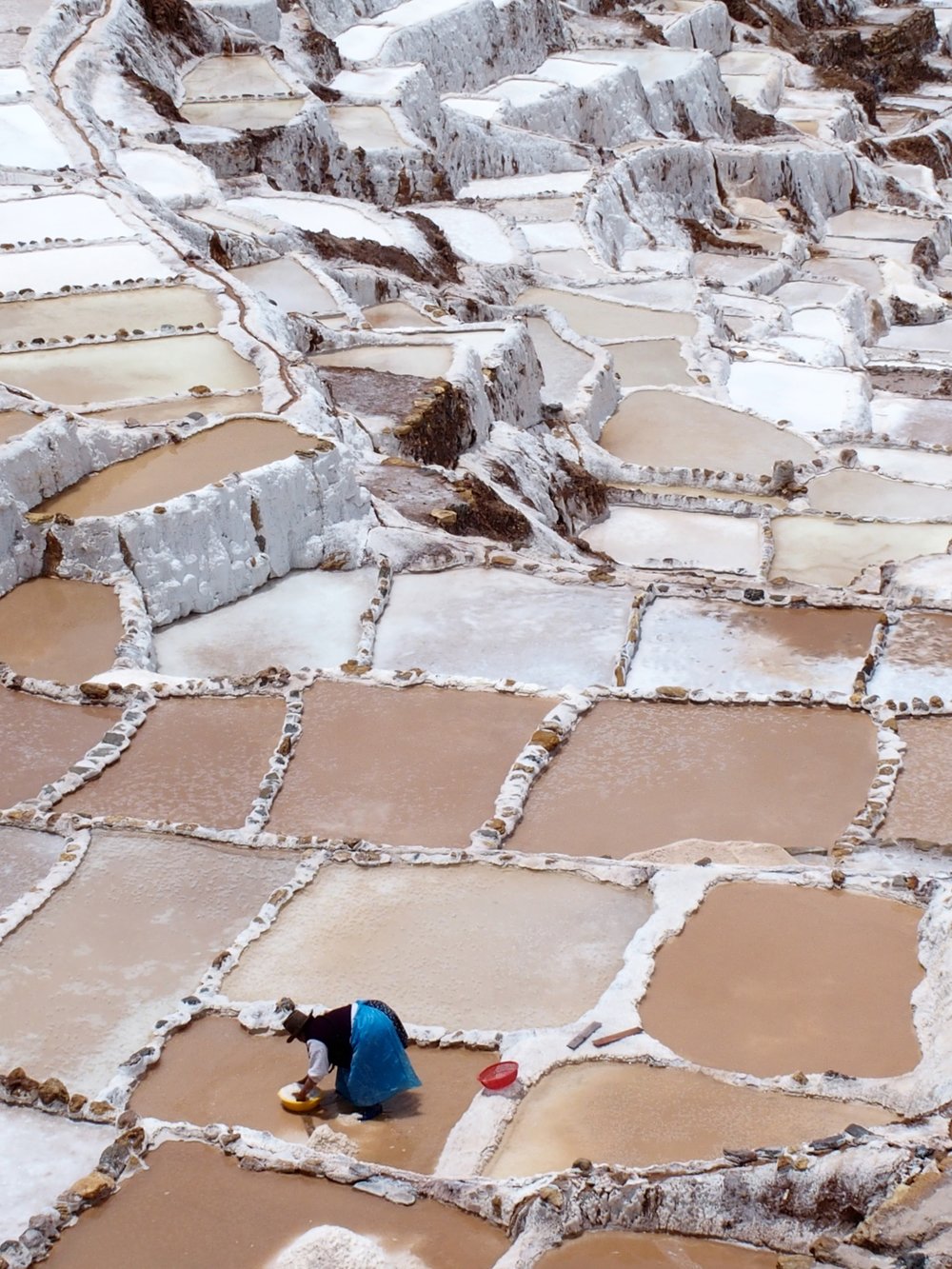13 Lesser-Known Inca Ruins to Visit in the Sacred Valley of Peru
/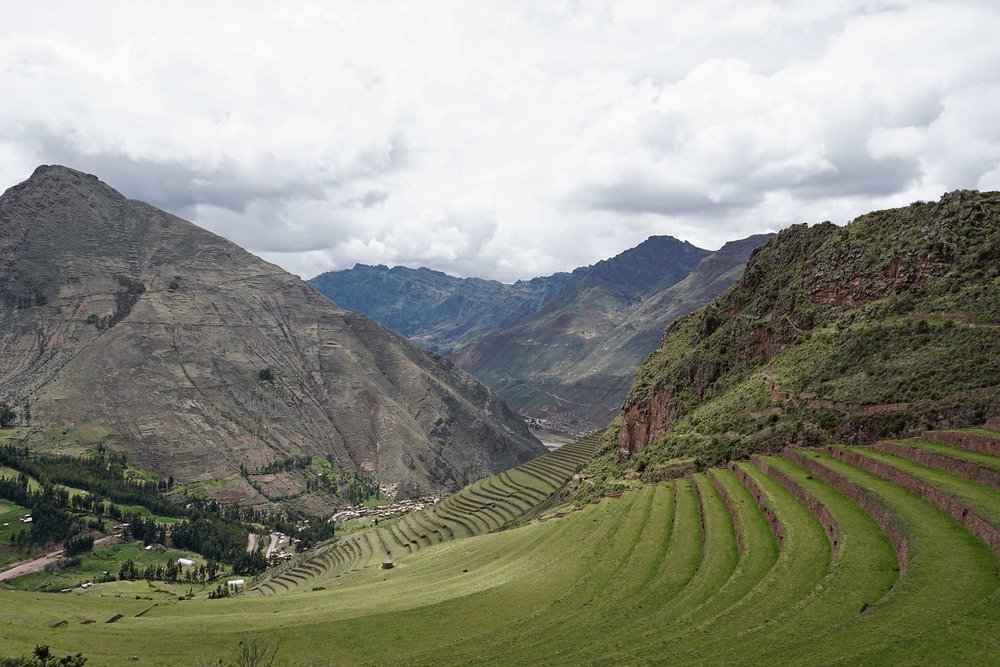
Pisac Inca Ruins, Sacred Valley, Peru
Of all the countries in South America, Peru has the richest assortment of ancient ruins; architectural marvels that have remained for centuries after the fall of the civilization that built them - the Incas.
Long ago, the Incas rose to conquer and control the largest empire the Americas have ever seen, appropriately named the Great Incan empire.
With Cusco as the capital, the Incan empire extended throughout what is now Equador and to the corners of Colombia in the north, to central Chile in the south, to Bolivia in the east and the Pacific Ocean to the west, claiming much of western South America as theirs.
The collapse of the Incan empire was a perfect storm of civil war, disease spread from the north (Central America), and the arrival of the Spaniards.
Many buildings and sites have miraculously survived the centuries of ravages by Spanish conquerors, most notable, Machu Picchu.
Today, there are many legendary ancient sites preserved for your exploration through the Sacred Valley of the Incas – a testament to their great civilization.
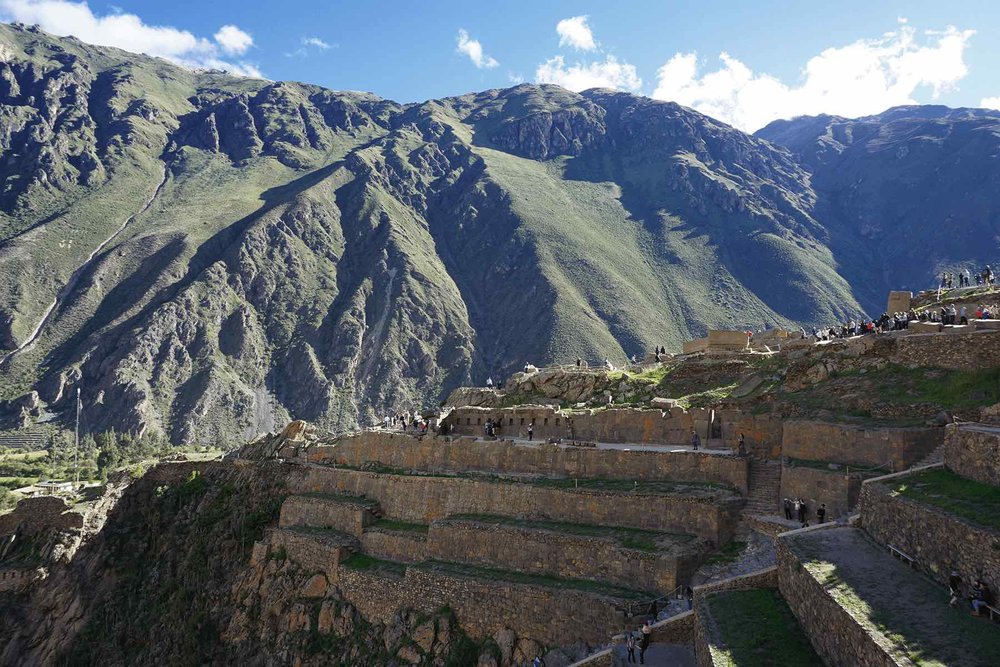
Ollantaytambo Inca Ruins, Sacred Valley, Peru
Brief History of the Incas
As legend has it, the Incas emerged from Lake Titicaca when the creator god, Viracocha, conceived the first two people Manco Cápac and Mama Ocllo. Shortly thereafter, with a growing tribe, they migrated to the fertile valley around Cusco.
Before 1438, the Incas were a small tribe that gradually grew to conquer the western part of South America.
FUN FACT: In Quechua, Inca literally means “lord, king” and the word was used only for the high Inca ruler, emperor and his royal line.
In 1438 AD, under the command of the Sapa Inca (Quechuan for “one or only lord or king”) named Pachacuti, the Incas began to expand their empire to the far reaches of South America.
Pachacuti, also spelled Pachacutec, is considered the greatest Incan emperor of all, as he was the founder of the Incan empire in many ways. It was Pachacuti who had the vision for one great empire and first lead the efforts to conquer the western part of South America.
In fact, Pachacuti is believed to have built Machu Picchu.
Rugged lands of the Andes mountains posed many hindrances for growth, nevertheless they were able to form a remarkable empire notable for peace and prosperity. When the Incas arrived at a new tribe, they would offer luxury goods like textiles, gold, and corn to the chiefs to merge tribes. Then would solidify that new bond with marriage.
Goods were transported across the empire along purpose-built roads using llamas and porters as there were no wheeled vehicles. The Inca road network covered roughly 25,000 miles (40,000 km) – about 3 times the Earth’s diameter!
Incan empire was divided into 4 segments – Chinchaysuyu (north), Antisuyu (east), Collasuyu (south), and Cuntisuyu (west). At its height, it’s estimated that the Incan empire included 10-12 million citizens, speaking roughly 30 different languages!
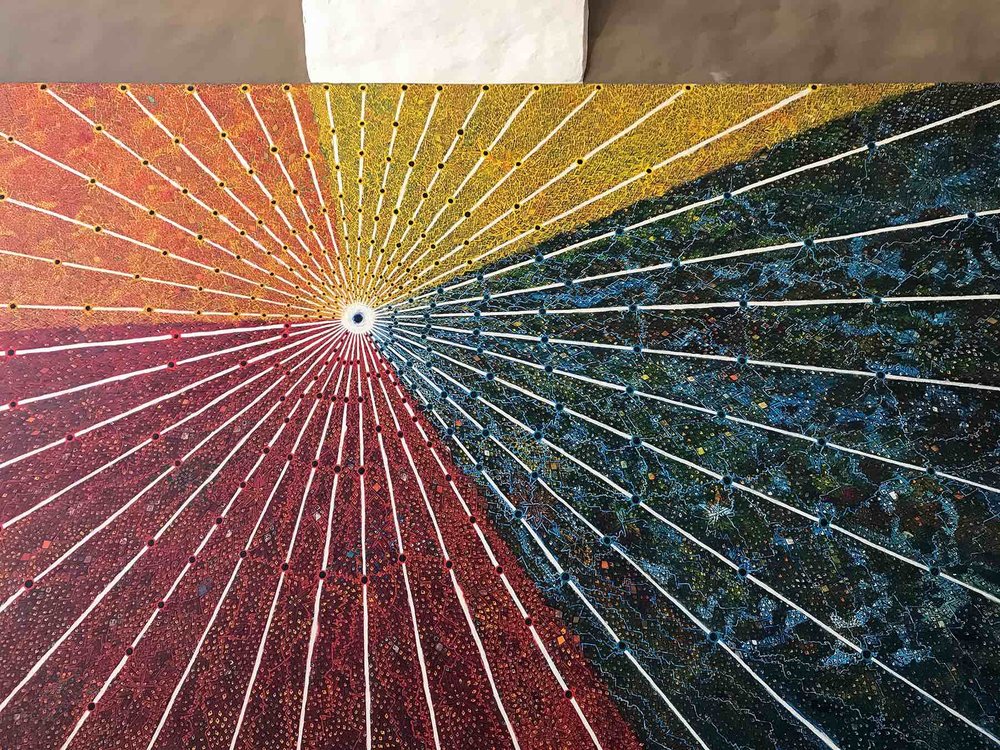
Artistic representation of the four segments of the incan empire. coricancha, peru
The Incas were notorious for being master stone masons. The Incas constructed large buildings, walls and fortifications using finely-worked blocks - either regular or polygonal - which fitted together so precisely no mortar was needed! The finely-worked blocks were used for important buildings like temples.
You can see examples of this work at Sacsayhuaman, Chinchero, and Machu Picchu among others.
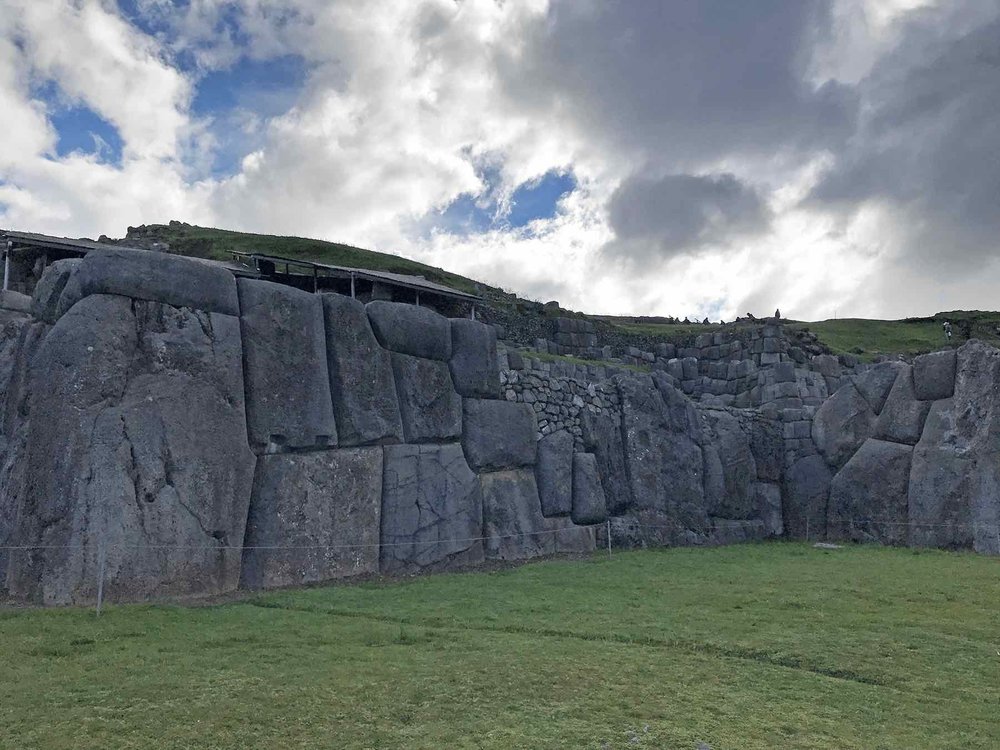
Incans achieved highly developed art forms such as pottery, weaving, and architecture; the latter being easy to acknowledge and admire at the marvelous Incan site, Machu Picchu.
It appeared the Incas had the makings of a great and lasting society. The Spanish Conquistadors are often blamed for the destruction and termination of the Incan empire as we knew it. However, when the Spanish arrived at the Incan empire, they met a nation divided.
In the 16th century, civil war broke out between the two sons and rulers of the empire; Huascar and Atahualpa.
Huascar was the legitimate son of the Incan emperor, and Atahualpa was the illegitimate son who was a better warrior and administrator. He lived in Quito and controlled the northern territories. Civil war broke out between the two sons, and in 1532 Atahualpa won and was proclaimed the new emperor.
The Inca Civil War lasted from 1529-1532.
Later that same year the Spaniards arrived in this post-civil war weakened state. They met with the newly proclaimed emperor, Atahualpa.
The Spanish demanded the Sapa Inca, Atahualpa, pay a room full of gold to the Spanish to ensure his safety - a ransom of sorts. He did pay in good faith, as the Incans often paid royalties, yet he was still executed by Francisco Pizarro and his conquistadors in 1533.
While the Incan civilization fell in the 16th century, many important pieces of their history, tradition, and culture still exist.
For example, the native language of Quechua is still spoken today in many parts of Peru – particularly Cusco and the Sacred Valley, with some 8 million still speaking the Quechua language!
Additionally, many marvelous Incan structures remain in the Sacred Valley.
What is the Sacred Valley?
The Sacred Valley of the Incas often referred to as simply Sacred Valley or Valle Sagrado (in Spanish) was the center of the Great Incan Empire.
Located near Cusco in southern Peru, the Incas developed their civilization along the fertile valley of the Urubamba river.
The Sacred Valley runs generally east to west along the Urubamba River, starting at town and ruins of Pisac and running west to Machu Picchu.
Many of the sites and towns next to them are quiet and ideal for decompressing before or after long travel days or treks.
Inca Ruins to Visit in the Sacred Valley
It should come as no surprise to hear that Machu Picchu is the most famous and popular site in the Sacred Valley of the Incas. You cannot talk about traveling Peru without mentioning this astonishing site, which has been listed as one of the New Seven Wonders of the World.
However, the Sacred Valley is full of fascinating archeological sites to explore, and no trip to Peru is complete without visiting a handful of these incredible less commonly visited sites, as they serve as a powerful reminder of the skill, craftsmanship, history, culture, religion, and reign of this civilization.
Here are 13 lesser-known Incan ruins that are worth a visit.
Ollantaytambo

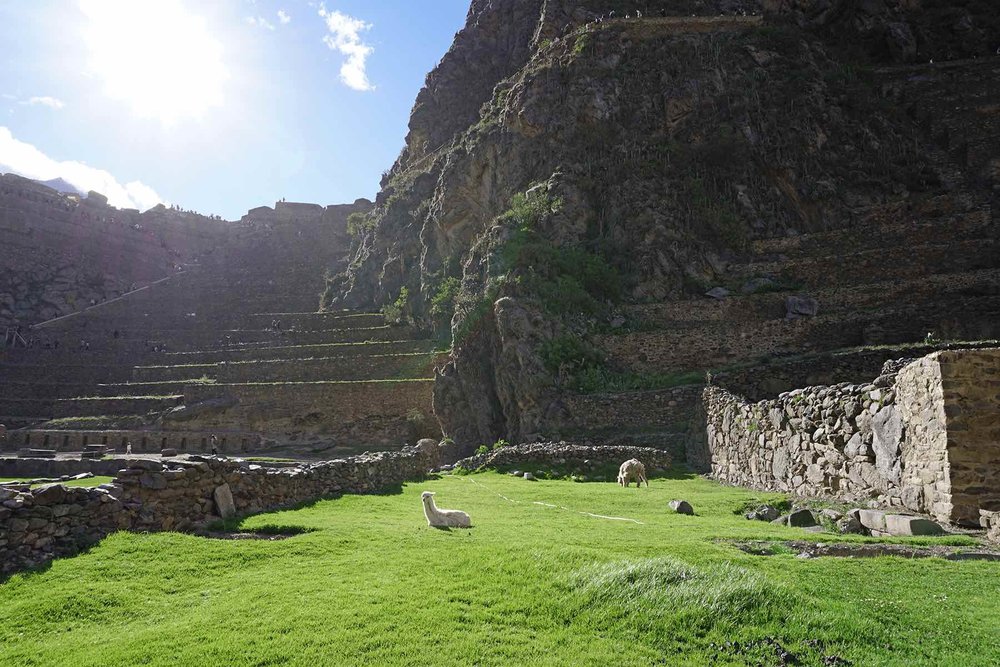
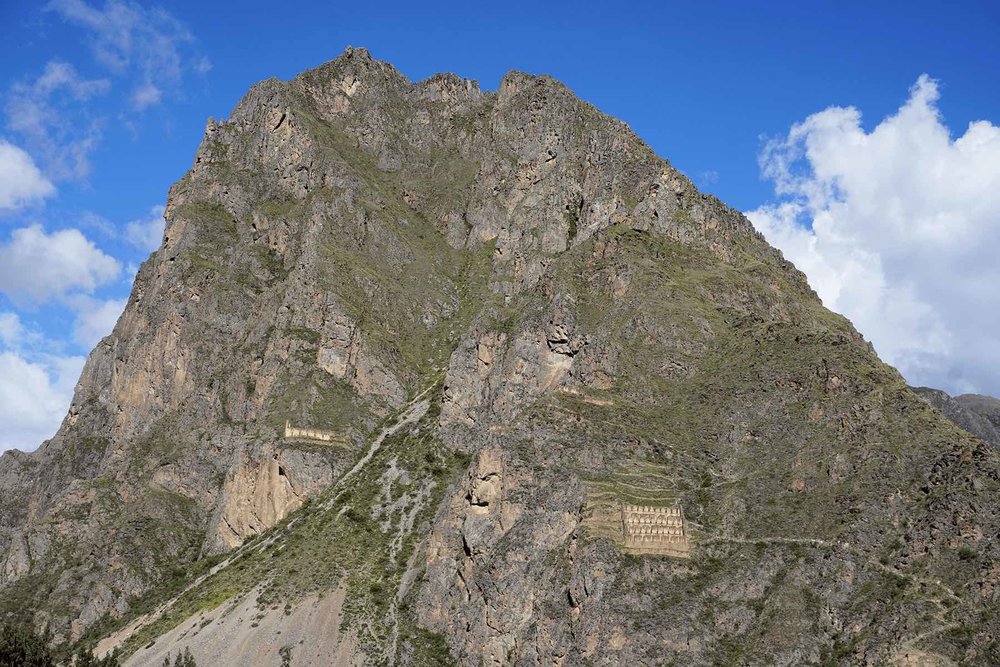
A major work of the Incas, Ollantaytambo is a massive hill-side fortress with sweeping views of the valley offering the inhabitants with both protection and an excellent sight of approaching visitors.
Pisac
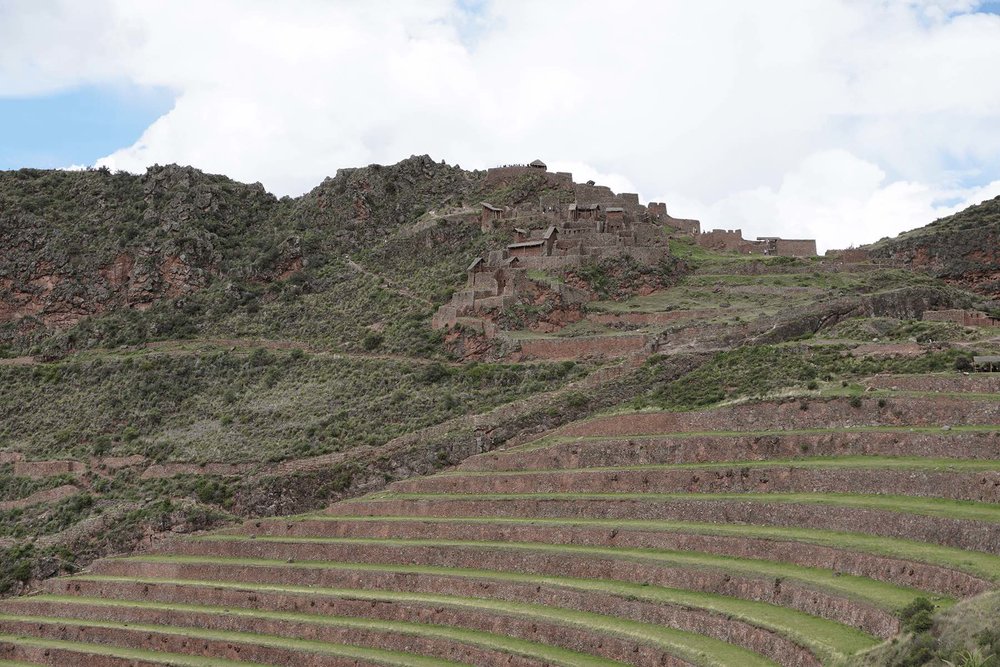
Only 1 hour away from Cusco, Pisac is a gem of the Sacred Valley. It is famous for its agricultural terraces and astrological importance, it’s believed many structures create a sundial. And the Sun Temple here rivals that of Machu Picchu. Additionally, Pisac is also the location of the largest Pre-Hispanic cemetery in the Americas. It’s also famous for it’s Sunday market.
Koricancha
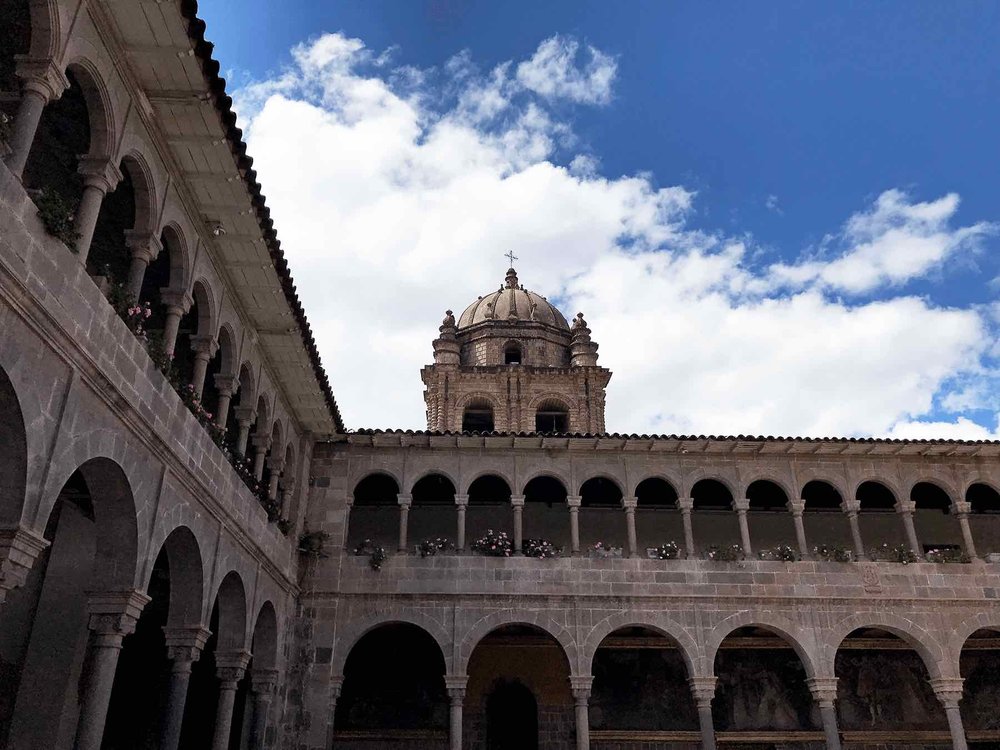
While Machu Picchu is the most famous ancient Incan site, Koricancha (or Coricancha) was actually the most important to the Incan people. Located in Cusco city, the once capital of the Incan empire, Koricancha was the Sun Temple and the house of politics, religion, and administration for the entire empire, in fact Koricancha translates to House of Gold. It was once a sacred gold-covered and emerald studded complex, but the valuables were raided and stolen by the Spanish. Additionally, the Spanish built on this most important site so today it appears in Spanish colonial style as seen above.
Chinchero
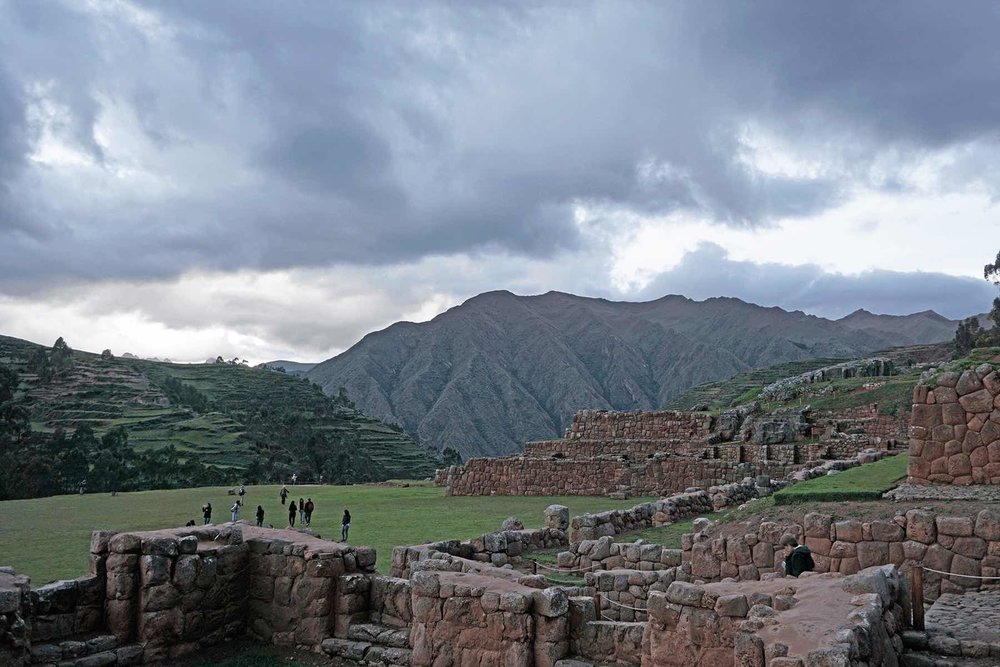
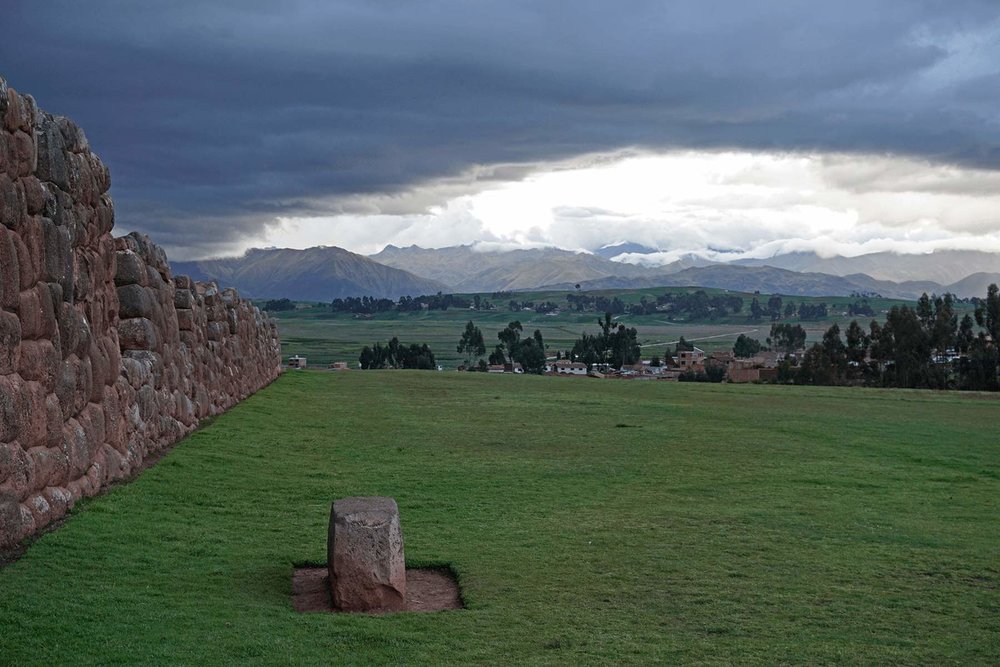

Located at 12,342 feet above sea level, Chinchero is a small, rustic Andean Indian village surrounded by beautiful snowcapped Vilcabamba mountain range; home to the peak of Salkantay. Chinchero is believed to be the mythical birthplace of the rainbow. It’s famous for it’s Sunday market, where impeccable woven textiles, produce and other goods are sold. It is thought that the Inca Tupac Yupanqui, son of Pachacuti, used Chinchero as a kind of resort. A beautiful adobe church, built by the Spanish in 1607, sits on the plaza that can be visited daily and holds mass on Sunday.
Moray
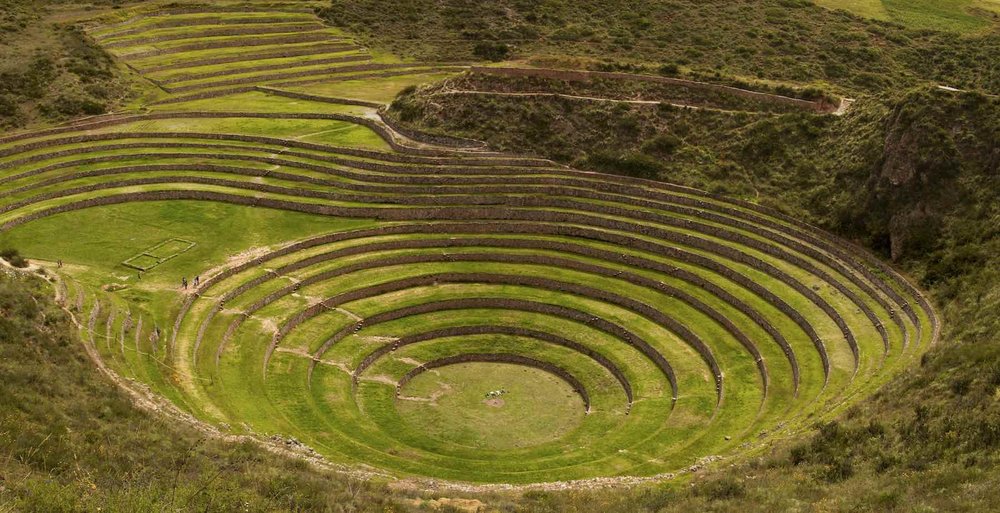
The Incan site of Moray is home to terraces, unusual in that they form complete circles, the largest is roughly 100 feet (30 m) deep. It is believed that this site was used as an agricultural research laboratory, to test and experiment with different microclimates.
Tambomachay
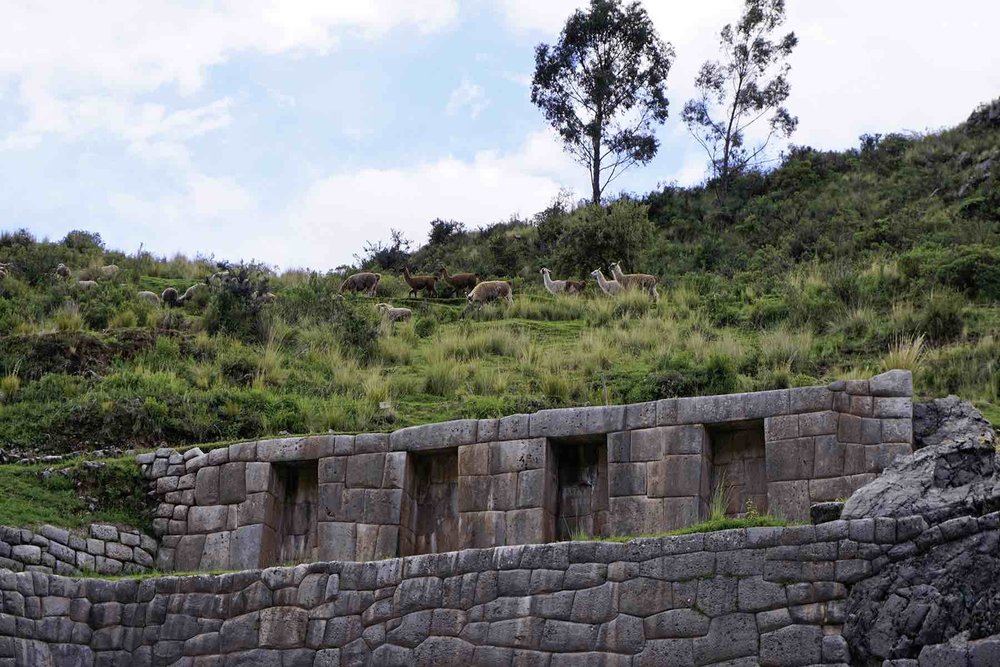
5 miles from Cusco, Tambomachay was believed to serve as a military outpost in tandem with a few other neighboring posts. Additionally, Tambomachay was believed to serve as a cleansing ground for those entering the sacred town of Cusco. There are two waterfalls for bathing, one for males and one for females.
FUN FACT: If you fill two empty bottles from these two different waterfalls, they fill up at the exact same time - a testament to the engineering of the diversion of water from the ancient Incas!
Qenqo
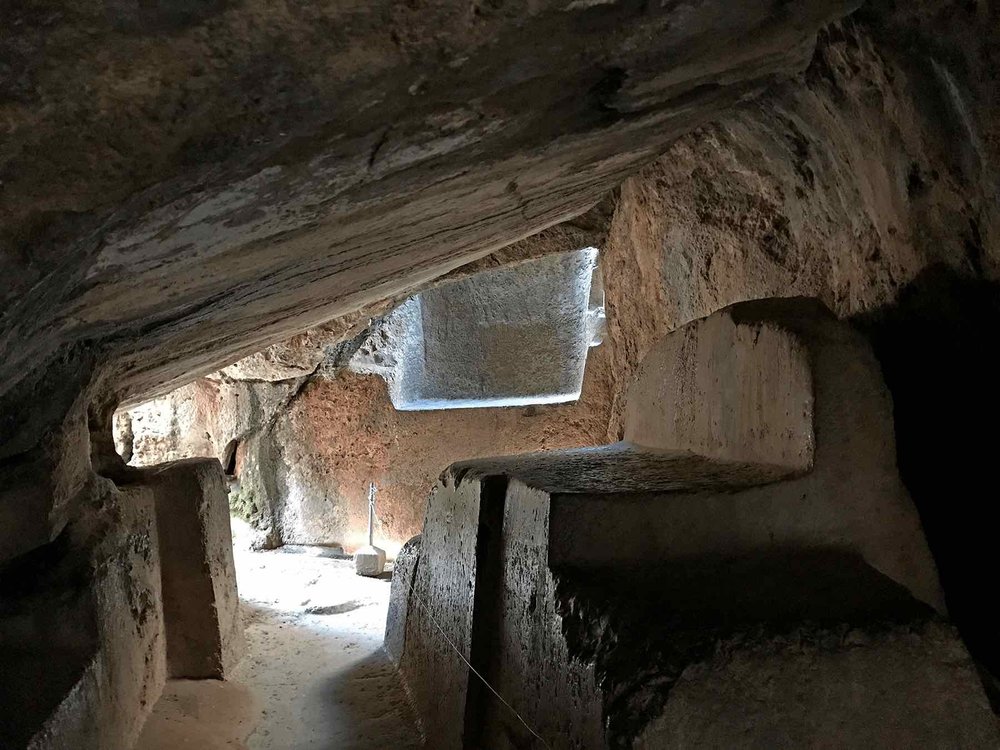
Qenqo is a temple only 3.5 miles (6km) and 15 minutes from Cusco. Qenqo means labyrinth or zigzag, it’s named for the crooked canal that’s built into the jagged rock. It’s believed that the canal carried holy water, beer or blood – all three hypotheses suggest death rituals and sacrifice happened here.
Winay Wayna
Quechua for “forever young”, Winay Wayna is built into a steep hillside overlooking the Urubamba River and features housing complexes, staircases, fountains, and terraces. This site is infrequently visited as these ruins can’t be accessed by car or train, they can only be seen while making the hike along the Inca Trail on foot.
Vitcos
The archaeological site of Vitcos consists of a massive palace, consisting of eight adjoined rooms. Its doorways feature some of the finest Incan architectural and engineering details. Additionally, this site is famous for Yurak Rumi, meaning "white rock" in Quechua, an intricately carved granite boulder the size of a city bus, which was once one of the holiest shrines in the Inca Empire. It's also believed that if not for this site, American explorer Hiram Bingham might never have found Machu Picchu.
Salinas de Maras
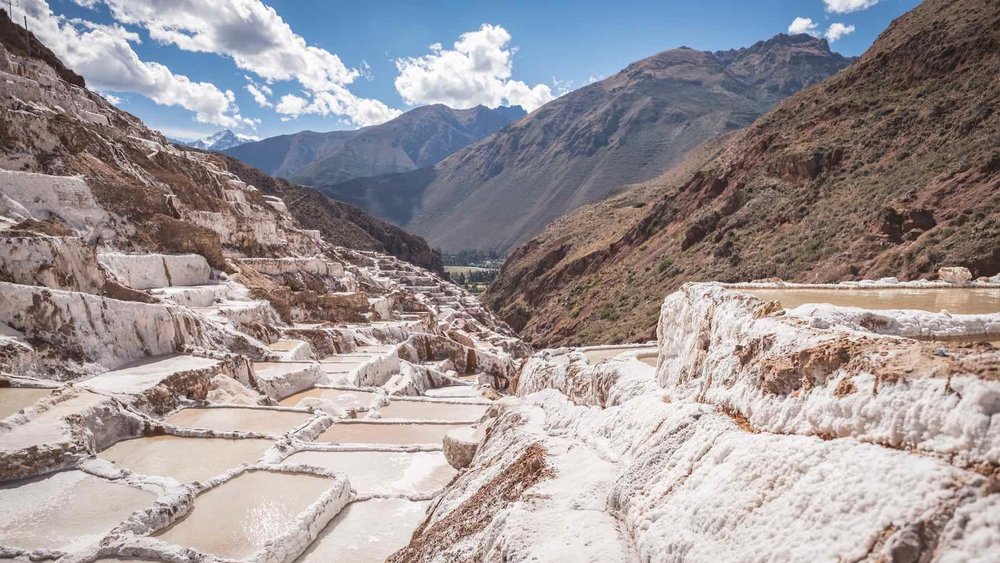
Salinas de Maras are salt mines, an astonishing sight as the mountain side is lined with almost 6,000 salt pools, called pocitos. These pools fed by a saltwater hot spring that the Incas diverted. As the water evaporates, the salt is extracted. These salt pools are still used today, each of the local families at least one of the 3,000 ponds. A short distance to Moray, Salinas de Maras the two are often seen on the same day.
Choquequirao
Choquequirao, meaning "Cradle of Gold" in Quechua is often referred to as Machu Picchu’s sister as it’s strikingly similar to the more famous site, however, Choquequirao may, in fact, be larger! Additionally, it is argued to have the best views of any Incan site. Since you can only travel to Choquequirao by foot or horseback, is is visited much less often than other sites, especially Machu Picchu. However, it won’t be quiet for long, the government is investing in a cable car that will shuttle hoards of people quickly and effortlessly up to the top. They’re also discussing paved roads, international hotels, and an airport.
Tipón
The original purpose of this site is unknown, even the original name of the site is lost - the name Tipon comes from the nearby town of Tipon. Incas were brilliant engineers who strove to integrate their architecture with it’s natural surroundings (how sustainable!), and this is evident in Tipon. Additionally, this site built on a water spring is home to one of the largest irrigation works in the terraces with a great distribution of outdoor water channels is a masterpiece of water management - the intricate irrigation and water channels found here still function centuries later!
Sacsayhuaman
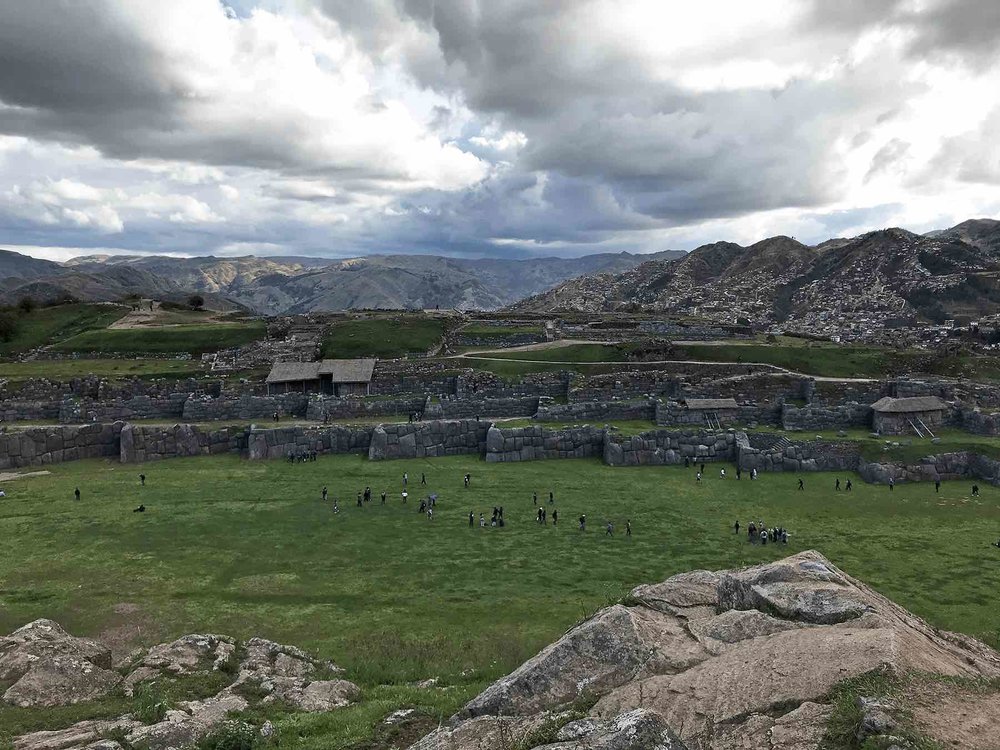
Pronounced like “sexay woman”, Sacsayhuaman is a citadel on the outskirts of Cusco. It is said that Cusco was built to resemble the spiritual and mighty puma – and Sacsayhuaman was its head. It's stones are perfectly chiseled together creating a jigsaw puzzle, and some stones weigh up to 300 tons!
It’s possible to see several of these sites together on the same day in a multitude of tours. Additionally, there are hotels in the different towns making it possible to stay the night and avoid the crowds of people doing day trips from Cusco.
And many more sites in the Sacred Valley, Lake Titicaca and other parts of Peru.
Next: Discover Machu Picchu, the Most Famous Incan Site
Visit Peru
Do you want to finally experience Machu Picchu and other Incan ruins in Peru for yourself?
We’ve been to Peru. We’ve ridden the busses, waited in the lines, and seen the sights; so we know what to do and what not to do. More importantly, we know how to optimize every experience to save you time, energy, stress and money and make the most of your precious vacation time. Trust Sapphire & Elm Travel to craft a truly memorable and stress-free vacation, unique to you.
Contact us to plan your custom vacation to Peru.
